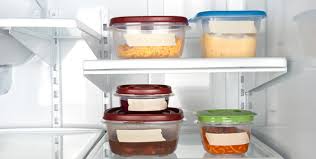Proper Storage Techniques To Preserve The Quality Of Food In Storage Containers
Effective food storage is crucial not only for preserving freshness and flavor but also for maintaining food safety and minimizing waste. Whether you’re storing leftovers, meal prepping for the week, or preserving seasonal produce, employing proper storage techniques can significantly extend the shelf life of your food. In this comprehensive guide, we’ll explore essential tips and best practices for using storage containers to preserve the quality and safety of your food.
Choosing the Right Storage Containers
Selecting appropriate storage containers is the first step in ensuring the longevity and freshness of your food. Consider the following factors when choosing containers:
- Material: Opt for containers made from food-safe materials such as glass, stainless steel, or BPA-free plastic. Glass containers are non-porous and resistant to odors, stains, and bacteria, making them ideal for storing a wide range of foods.
- Size: Choose containers that are appropriately sized for the amount of food you plan to store. Avoid overfilling containers to allow proper air circulation and prevent food from becoming squashed or damaged.
- Sealing Mechanism: Look for containers with secure, airtight seals to prevent moisture loss and exposure to air, which can lead to premature spoilage. Containers with snap-lock lids or silicone gaskets provide a tight seal and help maintain freshness.
Best Practices for Storing Different Types of Food
1. Dry Goods and Pantry Staples
- Containers: Use airtight containers or glass jars to store dry goods such as grains, pasta, flour, and nuts. Label containers with the contents and date of storage for easy identification.
- Location: Store dry goods in a cool, dry pantry away from direct sunlight and heat sources. Keep containers off the floor to prevent moisture absorption and pest infestation.
2. Fresh Produce
- Containers: Use perforated plastic bags or breathable containers for storing vegetables like lettuce, spinach, and herbs. For berries and delicate fruits, opt for containers with trays that allow for airflow and drainage.
- Temperature: Store fruits and vegetables at appropriate temperatures. Some produce, like tomatoes and bananas, can be stored at room temperature, while others, such as leafy greens and berries, benefit from refrigeration.
3. Leftovers and Prepared Meals
- Containers: Transfer leftovers into shallow, airtight containers to promote rapid cooling and minimize bacterial growth. Consider using glass or microwave-safe plastic containers for reheating convenience.
- Labeling: Label containers with the date and contents to track freshness and ensure timely consumption. Follow recommended storage times for leftovers to maintain quality and safety.
4. Dairy and Dairy Alternatives
- Containers: Store dairy products such as milk, yogurt, and cheese in their original containers or airtight containers to retain freshness and prevent absorption of odors from other foods.
- Temperature: Keep dairy products refrigerated at or below 40°F (4°C) to slow bacterial growth and extend shelf life. Avoid storing dairy near the refrigerator door, where temperatures fluctuate.
5. Meat, Poultry, and Seafood
- Containers: Use leak-proof, airtight containers or freezer bags to store raw meat, poultry, and seafood to prevent cross-contamination and maintain freshness.
- Freezing: For long-term storage, freeze meat and seafood in individual portions wrapped in freezer-safe packaging. Label packages with the date and type of food for easy retrieval.
Techniques for Maximizing Shelf Life and Quality
1. Proper Storage Temperature
Maintain appropriate storage temperatures to preserve food quality:
- Refrigeration: Keep perishable foods in the refrigerator at recommended temperatures to slow bacterial growth and maintain freshness.
- Freezing: Use the freezer for long-term storage of meats, seafood, and prepared meals. Ensure your freezer maintains a temperature of 0°F (-18°C) or lower for optimal food preservation.
2. Avoiding Cross-Contamination
Prevent cross-contamination by storing raw meats, poultry, and seafood in separate containers or wrapping them securely before placing them in the refrigerator or freezer. Clean and sanitize containers after each use to minimize the risk of bacterial contamination.
3. Regular Inspection and Rotation
Periodically inspect stored food for signs of spoilage, such as discoloration, off-odors, or mold. Rotate items in your pantry, refrigerator, and freezer to use older items first and prevent food waste.
4. Utilizing Proper Labeling
Label storage containers with the contents and date of storage to track freshness and ensure timely consumption. Follow recommended storage times and guidelines provided by food safety authorities to maintain food quality and safety.
Conclusion
Effective food storage techniques are essential for preserving the quality, safety, and nutritional value of your food. By choosing the right storage containers, maintaining proper temperatures, and following best practices for different types of food, you can minimize waste and enjoy fresh, flavorful meals longer. Whether you’re meal prepping for the week, storing leftovers, or preserving seasonal produce, implementing these tips will help you optimize your food storage practices and promote a healthy and sustainable approach to meal preparation and consumption.
Investing in high-quality storage containers and adopting these best practices will not only save you time and money but also contribute to a more organized and efficient kitchen. By taking proactive steps to store food properly, you can reduce food spoilage, enhance food safety, and enjoy the benefits of fresh and delicious meals every day.
Stay in touch to get more news & updates on Nextwe Blog.Com!
.






